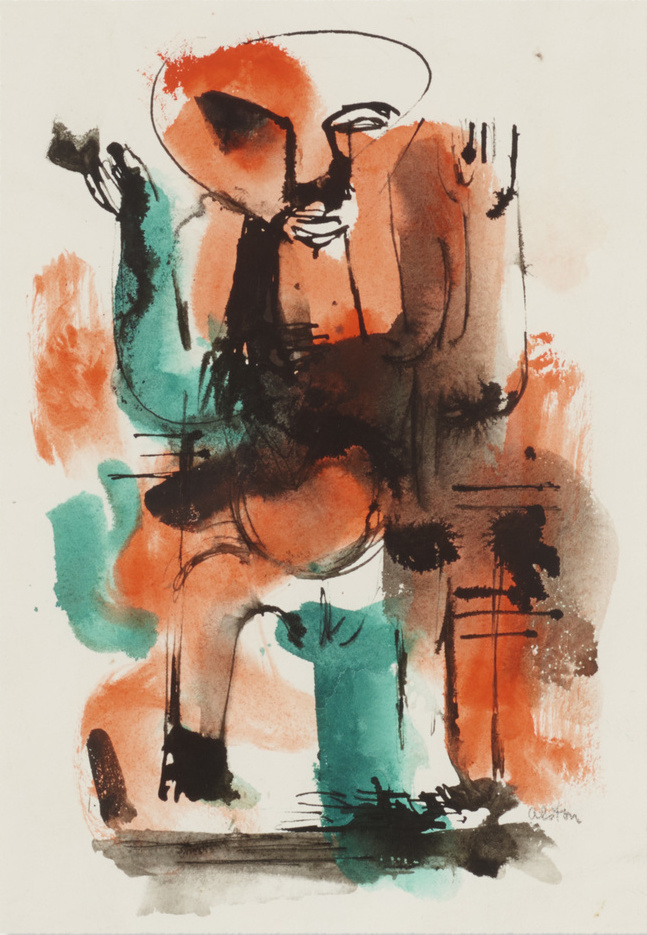Charles Alston, Untitled

Charles Alston, (b. 1907 Charlotte, North Carolina), Untitled, c. 1965, Watercolor, wash, pen & ink on paper, Museum purchase, The Nancy Gray Sherrill, Class of 1954, Collection Acquisition Fund 2020.27
This watercolor by Charles Alston is the first artwork by the renowned artist to enter the Davis Museum’s collections. A titan of the Harlem Renaissance, Alston initiated the artists’ collective 306 in the 1930s, became the first African American supervisor for the Works Progress Administration's Federal Art Project in 1935, and co-founded the Spiral Group in 1965. An influential educator who was the first African American teacher at both the Art Students League and the Museum of Modern Art, he taught artists like his cousin Romare Bearden and Jacob Lawrence. Alston’s aesthetically and politically groundbreaking works appear in the collections of institutions including the Metropolitan Museum of Art, the Smithsonian American Art Museum, the National Portrait Gallery, the Studio Museum in Harlem, and the Whitney Museum of American Art.
As a muralist, sculptor, cartoonist, and self-described “figure painter” who explored abstract expressionism, Alston strived to communicate the nuances of human existence and interaction through both portraiture and abstraction. This painting features a central figure suggestive of West African sculpture, specifically reliquaries of Mbete artists who experimented in the simplification of representative form long before European and Euro-American gestures towards abstraction. This figure overlaid with swaths of color demonstrates some of Alston’s key interests: the relationship between structure and expression, the free-form stylings of jazz music, and the dual lineages of African and African American art. While Alston depicts the quotidian subject of a standing human form, he recontextualizes, deconstructs, and obscures the figure in order to invite a more nuanced consideration. Like much of his work, this piece straddles the line between representation and abstraction in order to explore patterns of daily life.